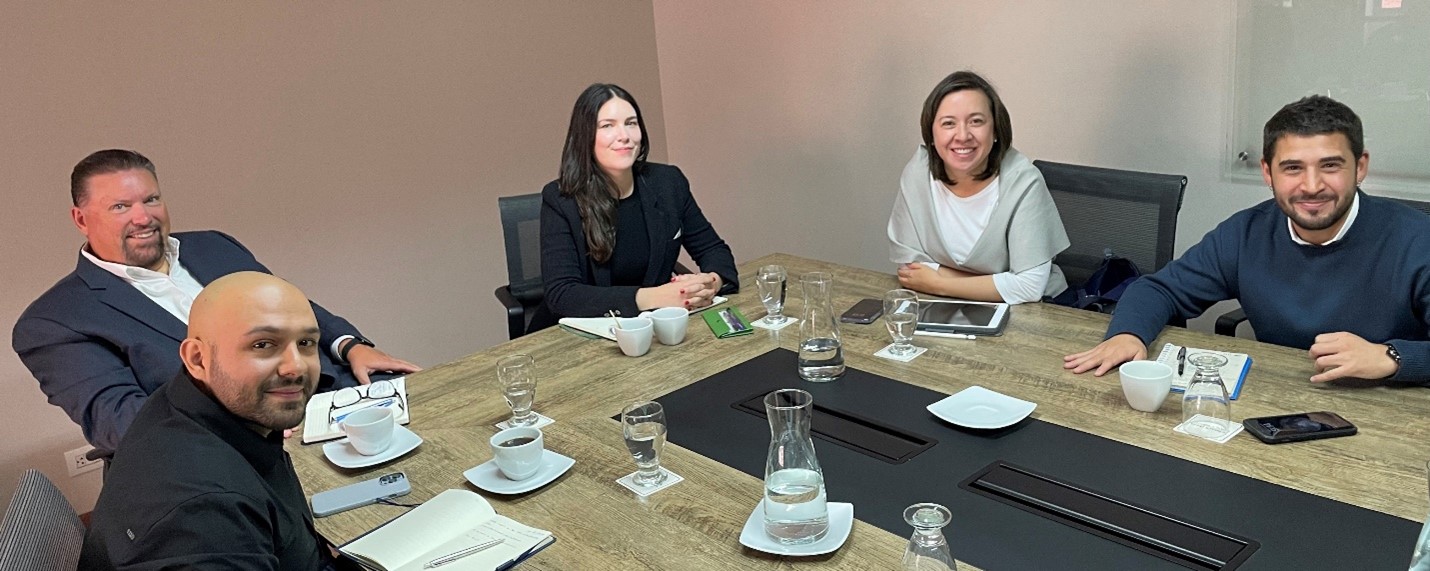|
August 24, 2024 Policing divided communities
PERF members, This week I’d like to share a little information about a recent trip I took to meet with police in Colombia and offer more general observations about policing divided communities. I traveled to Colombia at the request of the Howard G. Buffett Foundation to discuss PERF’s ICAT training and police-community relations. I brought along Tom Wilson, who oversees the ICAT program and our management services division, and Sgt. Jose Gomez of the Harris County, Texas Sheriff’s Office, who teaches ICAT in his own agency and serves as one of PERF’s expert instructors. Once in the country, we were joined by Chloe Gilroy, a program officer with the Howard G. Buffett Foundation, translator Kathleen Nygard, and Carlos Hoyos and Diana Urbano from International Justice Mission (IJM), an NGO that works in 18 countries to address human trafficking and violence against women and children. We met with police in Bogotá, Cúcuta, and Palmira.
Meeting with the International Justice Mission in Bogotá For those not familiar with Colombia’s recent history, beginning in the 1960s, the country experienced decades of armed conflict between the government and a range of insurgent groups. The largest of those groups was the leftist Revolutionary Armed Forces of Colombia, or FARC. The insurgent groups were largely based in rural areas, and funded themselves through kidnapping, extortion, and trafficking drugs, particularly cocaine. In 2016, the Colombian government and FARC signed a peace agreement that included plans for state institutions, including police and courts, to establish themselves in areas previously controlled by FARC. According to Carlos from IJM, those institutions have not been able to establish themselves everywhere, and in many locations, smaller armed groups are fighting for the territory once controlled by FARC. As a result, policing in the cities looks fairly similar to policing in the United States, but policing in many rural areas looks more like a military-style operation. And not all insurgent groups were involved in the peace agreement with FARC. In 2019, another group, the National Liberation Army, attacked the National Police’s academy in Bogotá, killing 21 people and injuring more than 70.
The police academy in Bogotá, where a 2019 car bombing killed 21 people When we visited with police in Cúcuta, they told us about one nearby location where state institutions are hamstrung by armed groups: Tibú, in northeastern Colombia, along the Venezuelan border. The Spanish newspaper El País described the situation in Tibú last year: “The police station remains cordoned off, behind fences and barricades. Since the last attack this past May – in which two uniformed officers and a woman died after the detonation of a bomb – the police have lived in hiding. They only go out on patrol in armored vehicles. The inhabitants fear approaching them for help, since most of the attacks have been directed against authorities.”
Outside the police station in Cúcuta Colombia’s National Police would like to shift from the military-style policing conducted in these rural areas to a more community-oriented style. But they face ongoing activity by armed groups, continued (if diminished) drug production, and a largely uncontrolled border with Venezuela. The Howard G. Buffett Foundation and IJM are exploring how they can help the National Police shift their policing style in Tibú. IJM and the University of the Andes surveyed local residents and found people want police in their communities and access to criminal justice services to report crimes such as domestic violence and sexual assault. We visited to better understand the issues and see if we can support this work.
Brigadier General Jose James Roa Castaneda of the National Police of Colombia Leaving Colombia, I reflected on the important role police play in historically divided communities that are trying to transition away from conflict, violence, or racial or ethnic discord. After the Good Friday Agreement and the Patten Commission’s report, I saw the key role that the Police Service of Northern Ireland played in maintaining peace in a sharply divided Northern Ireland. In Grants Pen, Jamaica, a modern, community-oriented police facility helped local police, residents, and business owners reduce gang violence. And a decade ago in the Middle East, I saw police leaders from Israel, Jordan, and the Palestinian Authority come together to pragmatically address crime issues. In the United States, I’ve seen police leaders in Minneapolis, Chicago, Kansas City, and countless other cities play a pivotal role in bringing police and community leaders together. Whether in Tibú, Colombia, or Chicago, a strong police leader can engage the community and challenge the status quo. It requires brave leadership to be a force for change. I feel fortunate to have had the opportunity to see many of those excellent police leaders in action, as well as their vital community partners. On an unrelated note, I want to acknowledge the passing of longtime talk show host Phil Donahue. I took inspiration from Donahue’s tendency to spontaneously interview members of the audience and have tried to incorporate that style into PERF’s meetings. I find we often get more interesting input from unprepared audience members than prepared panelists. So the next time I cold call you at a meeting, you can blame Phil Donahue! Finally, on a programming note, this column will take a break over the next few weeks as I take a little time off. Enjoy the rest of the summer! Best, Chuck |




